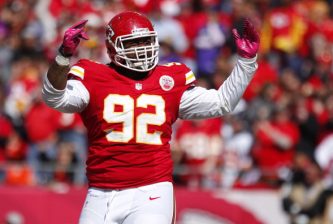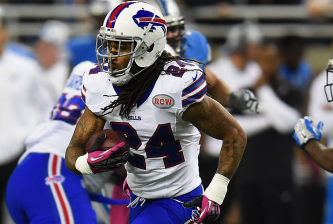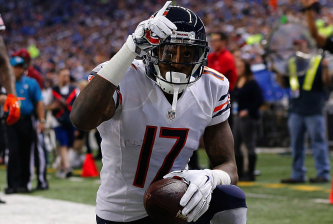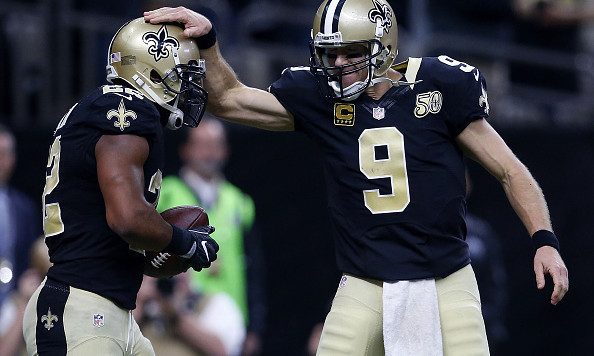Sean Payton, run the football? Crazy, right? Consider how the run/pass balance has gone since 2006 in the Sean Payton era (note: 2012 he was suspended for Bountygate):
| Year | Run % | Pass % | Pass Play % Ranking |
|---|---|---|---|
| 2006 | 43.02% | 56.98% | 11th |
| 2007 | 36.98% | 63.02% | 2nd |
| 2008 | 38.01% | 61.99% | 4th |
| 2009 | 44.84% | 55.16% | 24th |
| 2010 | 34.96% | 65.04% | 2nd |
| 2011 | 37.64% | 62.36% | 3rd |
| 2012 | 34.68% | 65.32% | 4th |
| 2013 | 37.22% | 62.78% | 6th |
| 2014 | 37.08% | 62.92% | 5th |
| 2015 | 36.22% | 63.78% | 7th |
| 2016 | 36.56% | 63.44% | 5th |
You’ll notice the two most successful years in the Sean Payton era (2006 and 2009), when the Saints went to the NFC Championship and won the Super Bowl respectively, are the only two seasons where the Saints were not in the NFL top 7 in pass play percentage. Now granted, a complimentary defense has a lot to do with that. Particularly in 2009, the Saints created a lot of turnovers on defense. Significantly more than any other season on this list. This led to big leads early, which meant the Saints could spend a majority of the second half running the ball. In other seasons it hasn’t been as easy to run, particularly post 2011, where the defense has been generally atrocious beyond words. Still, the common denominator on offense when you look at the most significant success in the Sean Payton era has been running the football more. The Saints have only run the ball more than 40% of the time in a season twice in the Sean Payton era, and both times they made the NFC Championship or better. In all other nine seasons the Saints have thrown the ball more than 60% of the time and they’ve made the playoffs only 3 times.
Drew Brees is in the final year of his contract at the ripe old age of 38. Now despite the narrative that his production is on a steep decline, his numbers dispute that. Brees completed 70% of his passes last year, threw for over 5,000 yards AGAIN, and his rating was 4th best of his career. Needless to say, he’s still producing well enough to give this team a chance to win every Sunday with complementary football. The problem in recent years has been the defense and a complete lack of that complementary football. But one thing that helps the defense is keeping them off the field, something the running game does more than passing. Further, at 38 the Saints may want to both protect Brees’s health in 2017 as well as set themselves up for the inevitable eventuality that they’ll have a quarterback they don’t trust to throw the football as much.
Enter the 2017 New Orleans Saints offseason. They traded receiver Brandin Cooks to the New England Patriots. With that pick, 32nd overall, they selected tackle Ryan Ramczyk out of Wisconsin. Their biggest free agent acquisition was guard Larry Wofford who they signed to a 4 year, $34 million contract. The Saints offensive line was already solid a year ago with positive contributions from Terron Armstead when healthy, Max Unger, Zach Strief, Jahri Evans, Senio Kelemete and Andrus Peat. But with Jahri Evans leaving and Strief on borrowed time, the Saints spent heavily to re-enforce their play up front. Armstead, Wofford, Peat and Ramczyk in particular should combine to give them a really solid line for years to come. After this, they acquired one of the best all time backs in NFL history in Adrian Peterson. Later, they drafted running back Alvin Kamara in the 3rd round out of Tennessee. They even traded up to do so, despite already having two other 3rd round picks. Most Saints fans will be quick to tell you Kamara will be used in the same role that Reggie Bush and Darren Sproles occupied, and that he won’t be a threat to Mark Ingram/Peterson touches. But he still represents a luxury that will allow the passing game to get the ball out faster. The Saints have re-tooled their offense by unloading their most explosive playmaker, a diminutive but very talented receiver in Cooks. And after this, they spent significant resources on bolster their offensive line and backfield.
Clearly, if you look at what was invested – the biggest contract of the offseason, Brandin Cooks, a 1st round pick, a 2nd round 2018 pick and a 3rd round pick – the Saints are looking to get back to the run balance they had in 2006 and 2009. It may just bring their team back to relevance in a big way. And don’t forget, the Saints are coming off a season in which they had their first 1,000 yard back since Deuce McAllister in 2006. Mark Ingram will continue to be the bell cow, but the addition of Peterson and Kamara will mean more balls going to running backs. The touches that Tim Hightower and Cooks saw last year (both now gone) will mostly be shifted to these players. Expect the Saints to have a higher run percentage than we are used to in the Sean Payton era in 2017.




